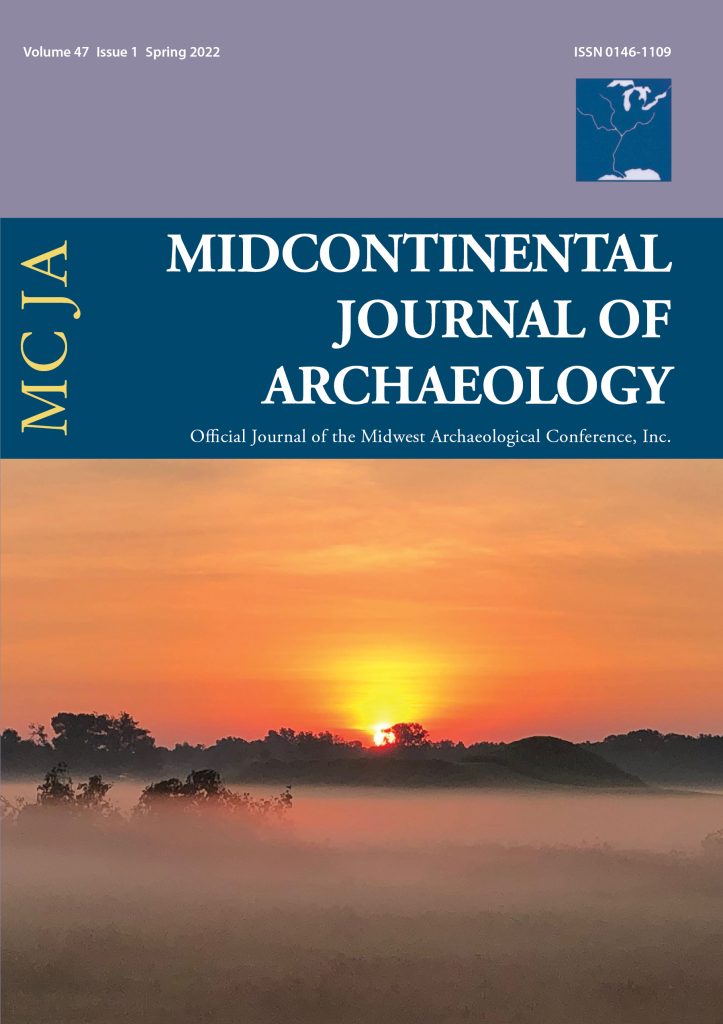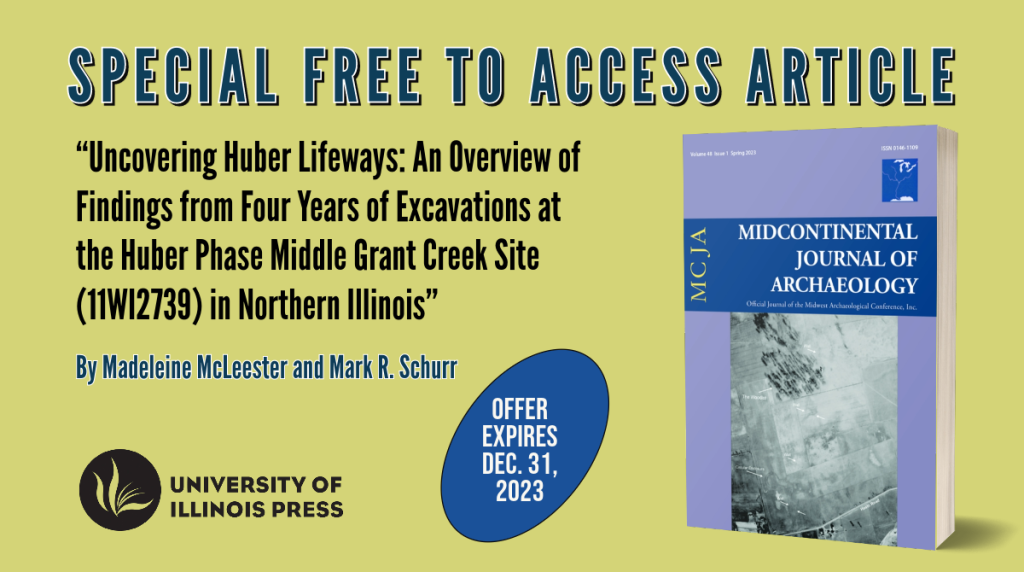
Whether you’re attending the Midwest Archaeological Conference (MAC), or just following along virtually, it’s the perfect time to get to know the society’s official journal, the Midcontinental Journal of Archaeology. Edited by Robert A. Cook, the mission of the journal follows that of MAC: to promote and stimulate interest in the archaeology of the midwestern United States and neighboring areas; to serve as a bond among those interested in this and related subjects; to advocate for the conservation of archaeological data; and to encourage an appreciation and support of regional archaeological research.
Check out some of our featured recent articles, learn about how to submit your work, and more.
Reading List
“The Precontact Archaeology of the Michigan State University Campus and the Campus Archaeology Program (CAP)”
By Susan M. Kooiman, Lynne Goldstein, William A. Lovis, and Alan F. Arbogast
The authors summarize the current state of knowledge about the precontact archaeology of the Michigan State University (MSU) campus as revealed through work conducted by the MSU Campus Archaeology Program, the MSU Museum, and the Department of Anthropology. This article paints an engaging multifaceted story of an ever-changing natural and social landscape that highlights the value of understanding the role college campuses can play in providing information about the distant as well as the recent past.
“‘For Sale by All Druggists’: Patent Medicine and National Market Access in Springfield, Illinois”
By Emma L. Verstraete
Examination of newspaper ads and store records of available products combined with data generated from the archaeological record provide insight into how individuals and communities kept pace with national and global trends in medicine and advertising. Decades of archaeological investigation in Springfield, Illinois, by Fever River Research have yielded a rich data set that provides diverse insights into the community. The goal of this case study is to apply a commodity access model to the Springfield, Illinois, data to examine the accuracy of modern researchers’ ideas about the impact of market access on consumer choice.
“Functional and Stylistic Considerations of Mixed Grog- and Shell-Tempered Late Mississippian Pottery from the Nashville Basin”
By Domenique C. Sorresso, C. Trevor Duke, Charles R. Cobb, Brad R. Lieb, Edmond A. Boudreaux, III, and Anthony M. Krus
Mississippian period ceramic assemblages in the Nashville Basin region of Tennessee are traditionally viewed as being overwhelmingly shell tempered. The authors’ petrographic analyses of 30 ceramic sherds from three Middle Cumberland sites have revealed, however, the presence of grog, or crushed potsherds, in shell-tempered pastes in over 40% of their specimens.
“The Mielke Clovis Site (33SH26), Western Ohio, USA, Geochemical Sourcing, Technological Descriptions, Artifact Morphometrics, and Microwear”
By Matthew T. Boulanger, Briggs Buchanan, G. Logan Miller, Brian G. Redmond, Bob Christy, Brandi L. MacDonald, David Mielke, Ryun Mielke, Connie Mielke, Tate Maurer, Bruce Meyer, Monty Meyer, Brian Trego, Andy Wilson, Pete Cartwright, Leo Ott, Michelle R. Bebber, David J. Meltzer, and Metin I. Eren
The Mielke site (33SH26) is a multicomponent locality in western Ohio, in an upland portion of the state that forms a drainage divide between the Great Lakes and Ohio River watersheds. The site possesses a prominent Clovis component that the authors describe here and assessed via test excavations, geochemical sourcing, technological descriptions, geometric morphometrics, microwear, and GIS analysis.
Special Journals Promo

Submit Your Work
If you’re interested in submitting your work, the Midcontinental Journal of Archaeology seeks original articles on Eastern Woodlands archaeology of the region between the Appalachian Mountains and the Great Plains, from the Boreal Forests to the Gulf of Mexico, and on closely related subjects. Contributions range in chronology and context from the kill sites of the continents’ first inhabitants to the privies of early 20th-century city dwellers. The Journal is especially interested in manuscripts that apply contemporary theory or method to existing problems and data sets in the midcontinent and that are of broad, general interest across the region.
Find Out More
- Listen to our podcast with former editor Dr. Thomas Emerson.
- Individual memberships can be made through the Midwest Archaeological Conference.
- To recommend this title to your library, fill out this Library Request Form and provide to your library via email or in person. Many institutional libraries also have an online form you can fill out on their websites.
